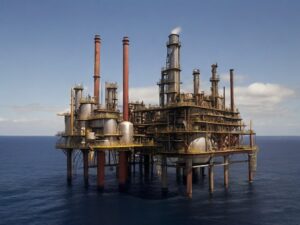As industries continue to evolve, the need for safety measures that protect both employees and equipment becomes increasingly crucial. One such measure is the implementation of intrinsically safe equipment. This article, brought to you by the Intrinsically Safe Store, aims to provide a comprehensive cost-benefit analysis of these systems. We invite you to visit our website to learn more about our range of intrinsically safe products and services.
What are Intrinsically Safe Systems?
Intrinsically safe systems are designed to prevent sparks or heat, which could potentially ignite flammable or explosive atmospheres. They are commonly used in industries such as oil and gas, mining, chemical processing, and manufacturing.
The Cost of Implementing Intrinsically Safe Systems
Implementing intrinsically safe systems involves several costs, including the purchase of intrinsically safe equipment, installation, and maintenance. However, these costs should be viewed as an investment towards ensuring safety and preventing costly accidents.
Equipment Costs
The cost of intrinsically safe equipment varies depending on the specific needs of the industry. For example, intrinsically safe barriers, which are used to limit energy transferred to hazardous areas, can range from a few hundred to several thousand dollars.
Installation and Maintenance Costs
Installation costs can also vary widely, depending on the complexity of the system. Regular maintenance is necessary to ensure the system remains effective, adding to the overall cost.
The Benefits of Implementing Intrinsically Safe Systems
While the costs of implementing intrinsically safe systems can be significant, the benefits often outweigh these initial investments. These benefits include increased safety, reduced risk of costly accidents, and potential insurance savings.
Increased Safety
By preventing sparks and heat, intrinsically safe systems significantly reduce the risk of explosions or fires, thereby protecting employees and equipment.
Reduced Risk of Costly Accidents
Accidents in industries such as oil and gas can result in significant financial losses. By reducing the risk of such accidents, intrinsically safe equipment can save companies millions of dollars.
Potential Insurance Savings
Companies that implement intrinsically safe systems may also benefit from reduced insurance premiums, as insurers often reward businesses that take proactive steps to mitigate risks.
Case Study: The Value of Intrinsically Safe Systems
A 2018 study by the National Fire Protection Association found that industrial fires caused an estimated $1.2 billion in direct property damage between 2011 and 2015. By implementing intrinsically safe systems, companies can significantly reduce the risk of such costly incidents.
While the initial costs of implementing intrinsically safe equipment can be high, the potential savings in terms of increased safety, reduced risk of costly accidents, and potential insurance savings make it a worthwhile investment. As a leading provider of intrinsically safe products and services, Intrinsically Safe Store is here to help you make the right choice for your business. Contact us today to learn more about how we can help you implement an intrinsically safe system that meets your specific needs.



























